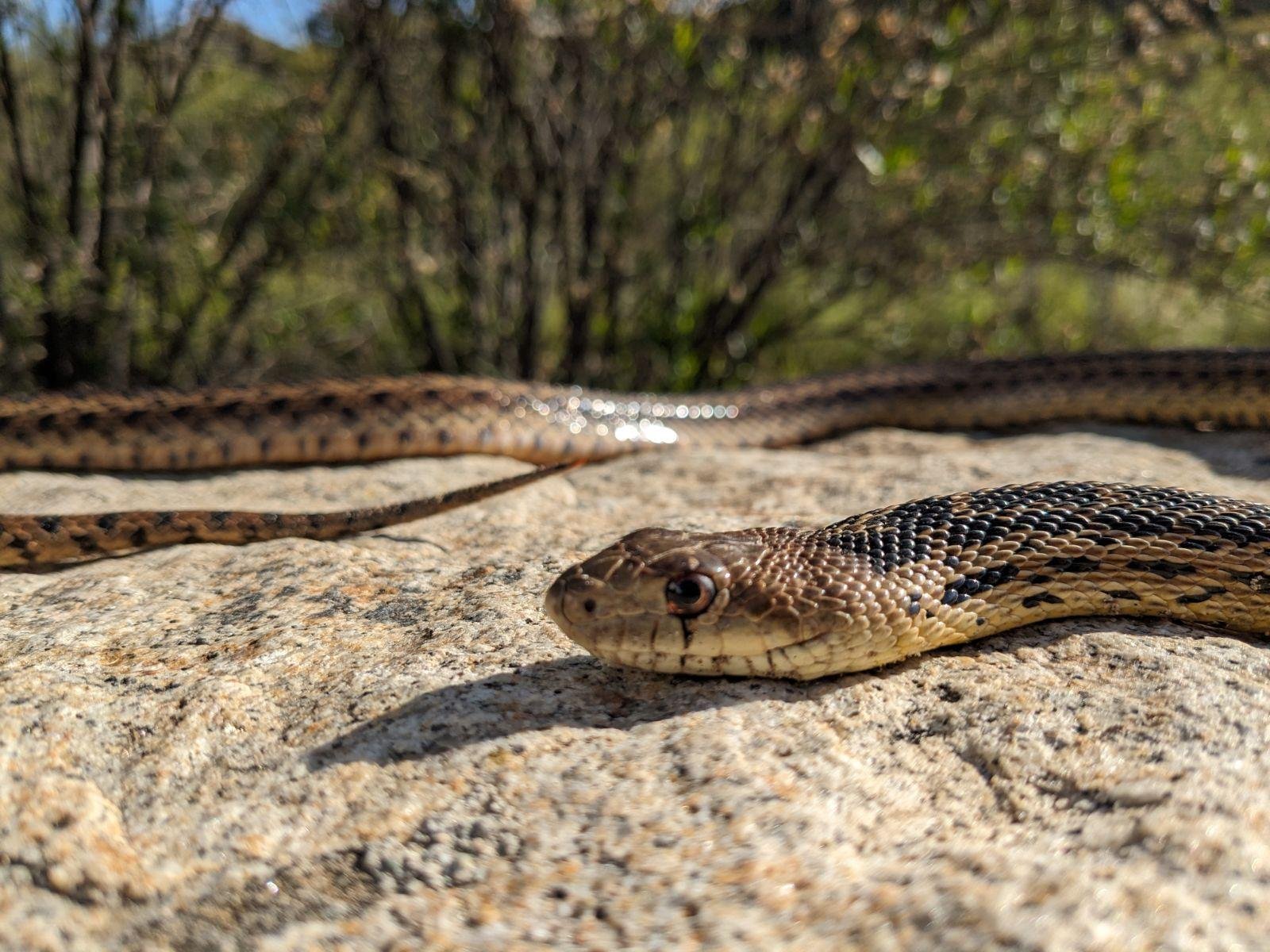Rise of the Reptiles at our South Coast Preserves
Gopher Snake at Santa Margarita River Trail Preserve / photo by Ryan Orr
Spring and summer feature long, warm days, inviting cold-blooded reptiles to emerge from their wintertime dormancy. Several species of snakes are commonly found at our South Coast Preserves, the most common being the San Diego Gopher Snake and the Southern Pacific Diamondback Rattlesnake. It is important to note the ecological role these wonderful creatures play and dispel fears and misconceptions so our visitors can be better prepared for snake encounters on the trail.
Ecological Role of Snakes
Snakes play an important ecological role by helping to control rodent populations found in wildland areas. Each spring there is a marked increase in the number of rodents and rabbits as young offspring are born in litters. Having a healthy population of snakes helps to keep the population of rodents and rabbits in balance with the ecosystem, and out of our homes and gardens.
Common Snakes in the Area
Most common:
San Diego gopher snakes
Southern pacific diamondback rattlesnake*
Less common:
Red racer/coachwhip
Red diamondback rattlesnake*
California kingsnake
Two-striped garter snake
San Diego ring-necked snake
* The red diamondback and Southern Pacific diamondback rattlesnake are venomous.
Red rattlesnake at Santa Margarita River Trail Preserve / photo by Ryan Orr
What To Do If You Encounter a Rattlesnake
Rattlesnakes are not aggressive, and would prefer to simply be left alone. However, a rattlesnake will defend themselves if they are cornered or threatened — Which is why most snake bites occur when someone attempts to pick up or handle a rattlesnake. If you ever encounter a rattlesnake and it is rattling its tail, always stand back and give it enough space to safely retreat.
It is important to always stay on trail while hiking, rather than venturing off trail where camouflaged snakes are concealed. If you do encounter a snake, it is best to pause and observe the snake's behavior, giving the snake a minute or two to move out of your way. More often than not, the snake will simply cross the path looking for a place out of sight from humans or for an opportunity to bask in the sun and warm up. If the snake doesn’t move so that you can pass, consider stomping 8-10 feet away from the snake. The snake will sense your presence and usually retreat to a safe place off trail.
When hiking in the spring and summer months, it is a good idea to look along the margins of the trail and in between boulders and under logs where you plan to step, to avoid stepping near a hiding rattlesnake. If you do have a rattlesnake encounter, be sure to share its approximate location with other visitors you pass by the trail so they can take precautions not to reagitate the snake.
About Santa Margarita River Trail Preserve
In the traditional territory of the Payómkawichum (Luiseño) peoples, tucked along the edges of the Santa Ana and Palomar Mountains, the Santa Margarita River is Southern California's last free-flowing river to remain undiverted, unchanneled, and undammed. With nearly 1,000 plant and animal species and remarkable riparian and upland habitats, Santa Margarita River Trail Preserve is part of the vulnerable South Coast Ecoregion and is recognized as one of the Earth’s 25 global hotspots of threatened biodiversity.
In 2018, The Wildlands Conservancy acquired the 1,384-acre water-blessed property — which was previously considered for a hydroelectric dam and reservoir by prior owners — with funding through a Prop 68 program administered by Wildland’s long term partner, the California State Coastal Conservancy.


